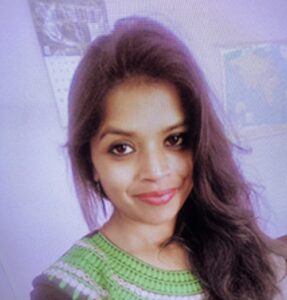Mars Vs. Venus - All The Differences & Similarities
Mars and Venus are the two planets in the Solar system that are quite close to us. Because of this, they are the planets we have been able to study and compare the most.
But they have more in common than just where their location is. Like Earth, Mars and Venus were made from the same protoplanetary disc, which was a cloud of dust and gas that formed around the Sun. This means they are all about the same age and are made of similar matter.
But after 4.6 billion years, they have changed in many ways and have become very different planets.
In this article, we’ll compare Mars and Venus and look at the things they have in common and the ways they’re different.
Mars Vs. Venus Comparison Table
The table below shows a comparison of both planets.
| VENUS | MARS | |
|---|---|---|
| Solar System Position | 2 | 4 |
| Distance from the Sun (avg) | 108 million km | 226 million km |
| Radius | 6,051 km | 3,389 km |
| Rotation period (1 day) | 243 days | 24 hours 37 minutes (1.025 days) |
| Mass | 4.8675×1024 kg | 6.4171×1023 kg |
| Orbit period (1 year) | 224.7 days | 687 days |
| Orbital speed | 35.02 km/s | 240.7 km/s |
| Surface temperature (avg) | 464 °C | −110 °C to 35 °C |
| Surface pressure | 9,300 kPa | 0.636 kPa |
| Surface gravity | 8.9 m/s2 | 3.72 m/s2 |
| Density | 5.24 g/cm3 | 3.93 g/cm3 |
| Escape Velocity | 10.36 km/s | 5.027 km/s |
| Albedo | 0.689 | 0.170 |
| Satellites (Moons) | 0 | 2 |
| Core | rock | rock |
| Atmosphere | 96.5% CO2, 3.5% N | 95% CO2, 2.6% N2, 1.9% Ar, 0.16% O2, 0.06% CO |

Mars Vs. Venus – Size Differences
Mars is smaller than you might think compared to the other planets in the Solar system. In fact, it is the second smallest planet, just a few hundred kilometers bigger than Mercury.
Venus is almost twice as big as Mars, even though it is the third smallest planet.
Venus is almost the same size as Earth, so every size comparison you can make between Mars and Venus also works almost exactly for Earth.
Mars Vs. Venus – Similarities
- Both planets came into existence about 4.6 billion years ago.
- The cores of both planets are made up of the same matter. It is made of iron, nickel, silicate minerals, and other metals.
- Mars and Venus are planets that have surfaces made of rocks, unlike the “Jovian planets,” which are made of gas and don’t have a solid surface.
- There is an atmosphere on both planets.
- The atmospheres of Venus and Mars are made up of a lot of the same things, which is pretty unusual. It is mostly made up of the same amounts of carbon dioxide (CO2) and nitrogen (N). The atmospheres of no other two planets are so similar.
- Both of these planets have less gravity than Earth does.
- Both Mars and Venus have had times when their geology was very active. They both had volcanoes, earthquakes, and other natural disasters.
- Both planets’ surfaces are the same color. Orange, red, brown, and so on.
- The names of both planets come from the names of Roman gods. Mars, the god of war, and Venus, the goddess of love and beauty.
- Even though they are close to Earth, Venus and Mars are outside the solar system’s habitable zone. This means that they can’t have liquid water on their surfaces.
- Both planets are too dangerous for humans to live on.
Mars Vs. Venus – Differences
- Phobos and Deimos are the names of Mars’ two moons. Venus doesn’t have any natural satellites.
- Mars’ poles have ice and may have liquid water. Venus probably doesn’t have either.
- The atmosphere of Venus is thick and very dense. It caused a greenhouse effect, which is why Venus is so hot. On the other hand, there isn’t much air on Mars. This explains a lot of the differences between the two planets because, as was already said, both atmospheres are made up of the same things.
- Venus has a small, induced magnetosphere that protects it a little bit from the solar winds. Mars lost its magnetosphere a long time ago. Asteroids may have been to blame. This is part of the reason why Mars has such a thin atmosphere.
- The surface of Venus can’t be seen from space or from Earth. If you pointed a telescope at it, you would only see the white and yellow clouds on top of it. We can see the surface of Mars and study its geology because the atmosphere on Mars is so much thinner.
- Because Venus has a thick atmosphere, its surface is very shiny. Mars isn’t. This is one reason why ancient astronomers thought Venus was a star for a long time.
- Like most other planets, Mars moves in the counterclockwise direction. Venus moves in the opposite direction, clockwise. Uranus is the only other planet in the Solar System that doesn’t follow this rule. It almost spins sideways.
- Like Earth, Venus probably has tectonic plates. Mars doesn’t.
- People would find it hard to live on Venus or just go there to look around. Before they even reach the surface, spacecraft and probes would melt in Venus’s heat. Mars is a better location for research and could be a better place to live.
- Mars spins much faster than Venus. Only one rotation of the Earth takes 243 days. Mars spins almost as fast as Earth does. It has nearly 24-hour days.
- Venus is about half as far from the Sun as Mars is.
- The pull of Venus is more than twice as strong as that of Mars.
- Venus is much larger than Mars.
- Venus experiences rain. Only it’s not water; it’s sulfuric acid. Mars doesn’t get any rain or snow, but some clouds exist.
Conclusion
Venus and Mars have a lot in common, like how old they are, how rocky their surfaces are, how their atmospheres are made, and how they look.
Venus and Mars are also very different in a lot of ways, like how fast they go around the sun, how thick their atmospheres are, how big they are, and how many natural satellites they have.
Both planets started out the same way, but they have changed a lot over a period of billions of years.
Written by:

Kavya Joshi
My love affair with space began in a field in India at the age of 7, when I looked up at the Milky Way for the first time. Ever since, I have been attempting to cram in every fact about the Universe, I can find into my head.
ABOUT US
We are a team of active amateur astronomers, here to help you with all your astronomy and science related needs – this is anything, from reviewing the latest telescopes to be released to talking about gravity and neurons. The Big Bang Optics was started because of our love for astronomy and to help others like us find the best telescope and accessories.
LEGAL DISCLAIMER
The Big Bang Optics is a participant in the Amazon Services LLC Associates Program, an affiliate advertising program designed to provide a means for sites to earn advertising fees by advertising and linking to Amazon.com. The Big Bang Optics also participates in affiliate programs with Clickbank and other sites. The Big Bang Optics is compensated for referring traffic and business to these companies.




